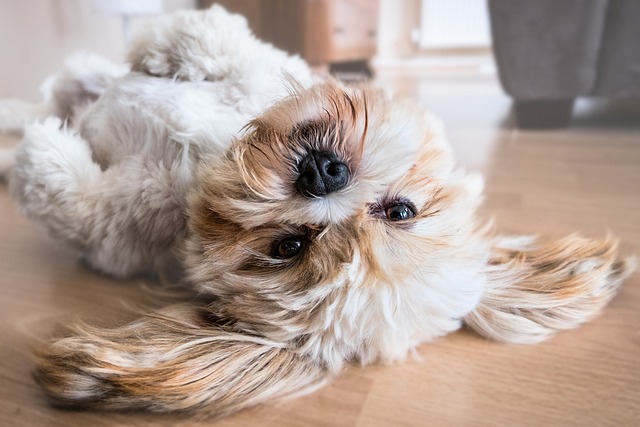
How do i train my dog to be obedient?
Watching your dog dart across the park ignoring your calls isn’t just frustrating—it can put them at risk near busy streets or public spaces.
How to train a puppy to walk? For new dog owners in the US, taking your fluffy puppy for their first walk often comes with chaos—pulling on the leash, darting after squirrels, or stopping every two steps to sniff grass. But with patience and the right approach, teaching your puppy to walk nicely can become a joyful daily routine instead of a struggle. It’s not just about getting from point A to B; it’s about building good habits that make walks enjoyable for both of you.
From a behavioral perspective, puppies learn through association and consistency. Their critical socialization period (7–16 weeks) is ideal to start leash training, as they’re more open to new experiences. Puppies have short attention spans, so keep initial sessions to 5–10 minutes. The key principle? Positive reinforcement—rewarding the behavior you want (walking calmly beside you) makes it more likely to repeat. This taps into their natural desire to seek rewards, whether treats, praise, or play.
Start indoors to get your puppy used to the leash. Attach a lightweight harness (never a collar for young puppies, to protect their necks) and let them drag it around briefly during playtime. Once comfortable, pick up the leash and walk a few steps. When they follow without pulling, say “good walk” and offer a tiny high-value treat (like freeze-dried chicken). If they pull, stop walking immediately—this teaches them that pulling doesn’t get them where they want to go. Gradually move outdoors after their vaccinations are complete, starting with quiet sidewalks before trying busier areas.

In the US, training goes hand-in-hand with legal responsibilities. Wait until your puppy finishes core vaccinations, including rabies shots required by all states (usually around 16 weeks), before taking them to public parks—this keeps them safe from diseases. When nature calls during walks, always carry waste bags: cities like Seattle fines owners $250 for leaving pet waste, and many parks provide dispensers for convenience. Culturally, physical punishment (like yanking the leash) is harmful and ineffective; it creates fear instead of understanding. Stick to praise and treats—your puppy will learn faster when they trust you.
For apartment dwellers, schedule walks around quiet hours to avoid disturbing neighbors, and practice “quiet” commands if your puppy barks at passersby. In community settings, keep your puppy on a 4–6 foot leash to respect others’ space, especially near children or other dogs. Remember, a well-trained walking buddy makes every outing a pleasure, strengthening your bond with each step.

Watching your dog dart across the park ignoring your calls isn’t just frustrating—it can put them at risk near busy streets or public spaces.

New puppy owners often find themselves rushing to clean up accidents before they set in, and that’s where puppy pad training becomes a game-changer.

If you've noticed your dog's waistline disappearing and your veterinarian has mentioned those few extra pounds, your first instinct might be to simply reduce the amount of food in their bowl.

Training a dog to use a designated spot indoors isn’t as daunting as many new owners fear, but it does take consistency and an understanding of your pet’s needs.

That moment of dread on a walk is all too familiar for many new dog owners. You see another dog approaching down the sidewalk of your neighborhood

If the sight of another dog on your neighborhood walk makes your heart sink as your own dog erupts into a frenzy of barking and lunging, you're not alone.